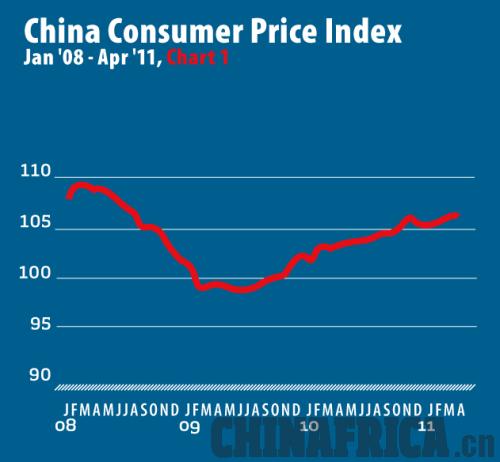| 
China's Problem with Prices
China is grappling with rising prices: Inflation is running at 5+ percent and global commodity prices are on a sustained upward curve. In April, China's economy cooled somewhat, yet China also imported less industrial commodities, further contributing to the pressure for increasing prices.
In last month's edition of the Econometer we reported on China's remarkable first quarterly trade deficit in seven years, which occurred in the first quarter of this year. Now, one month later, the picture suddenly seems entirely different. In April, the small $1 billion deficit of the first quarter suddenly mushroomed to a surplus of more than $11 billion. China's exports in this month jumped 25.9 percent to a record high of $155.69 billion. Imports, however, increased at the slower rate of 21.8 percent to reach $144.26 billion. Imports from Japan usually account for about an eighth of China's imports, and as imports from Japan in April barely increased from a year ago due to the effects of the earthquake there, this dragged down China's total imports for the month.
Yet the contrasting fortunes of China's exports and imports in April also illustrate the impact that rising prices is having on China's economy. In April, the Consumer Price Index (CPI) increased 5.3 percent year-on-year, slightly down from 5.4 percent in March (see Chart 1) yet very much a perpetuation of uncomfortably high CPI, which has been on a steady climb since mid-2009. It has been apparent for some time now that inflation is seen in China as the primary challenge facing the economy, and the government has taken recourse to a range of monetary tightening measures. Thus it has raised interest rates and increased reserve requirements for banks on multiple occasions. At the same time policies are being implemented to restrict bank lending, while rising global commodity prices are making imports of such commodities more expensive.
|